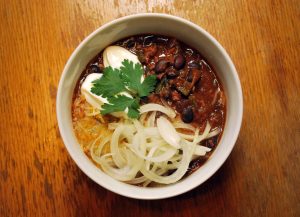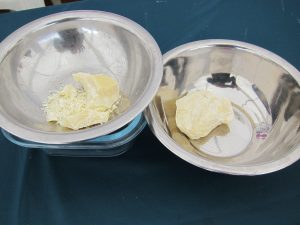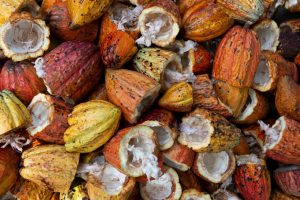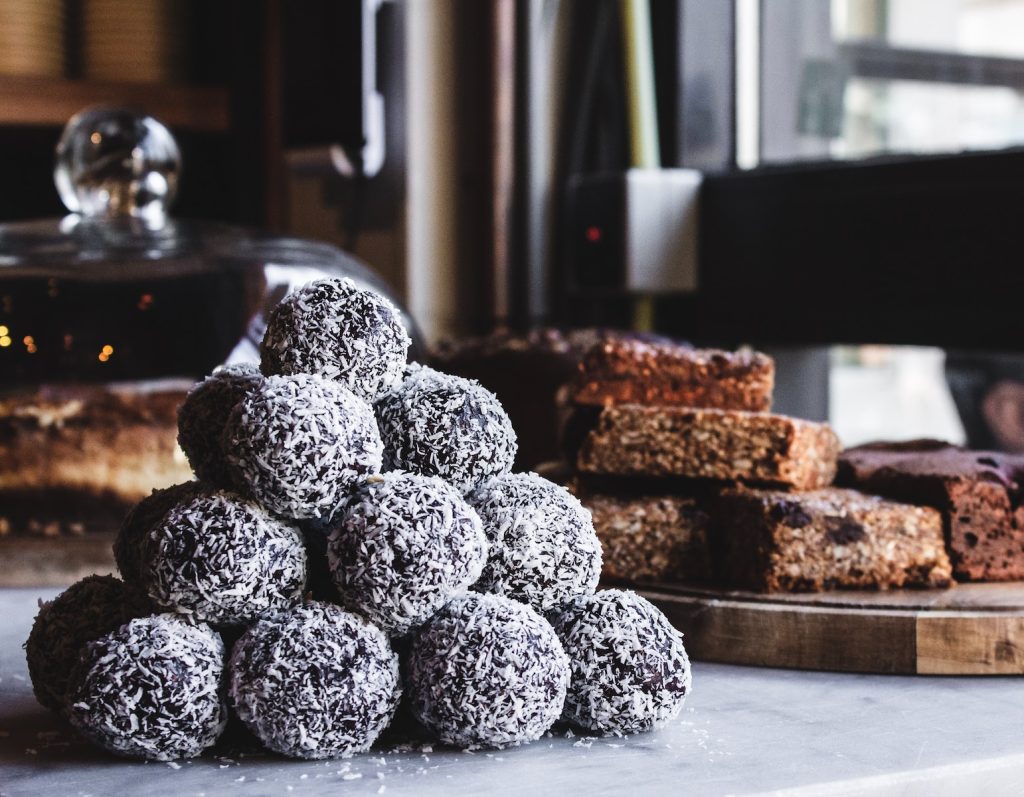Delve into the enchanting realm of cocoa, and you’ll discover a world rich in flavor, tradition, and botanical wonder. The humble cocoa bean, the essence of every chocolate delicacy, begins its journey in the lush, tropical regions where Theobroma cacao trees flourish. Yet, not all cocoa is created equal. The varietal tapestry of cocoa is as diverse as the myriad cultures intertwined with its cultivation and enjoyment. This richness in variety is not just about tantalizing the palate; it’s a narrative of ecology, genetics, and the relentless pursuit of quality.
The Botany of Cocoa
The journey of every chocolate bar begins with a tree – Theobroma cacao, a small evergreen tree native to the deep tropical regions of Central and South America. The name ‘Theobroma’ is derived from Greek, meaning “food of the gods,” a testament to the revered status of cocoa throughout history. Understanding the botany of cocoa is foundational to appreciating the complexity and the art of chocolate-making.
Main Types of Cocoa Beans



The categorization of cocoa beans into various types primarily hinges on their genetic lineage and the regions they are cultivated in. Over centuries, cacao trees have been bred and hybridized to yield diverse types, each with its distinct flavor profile, color, and level of hardiness against diseases and pests. Below are the main recognized types of cocoa beans that form the cornerstone of the global chocolate industry:
- Criollo: Originally native to Central America, particularly the basin of the Orinoco River in Venezuela, Criollo beans are often hailed as the “prince of cocoas.” They are revered for their delicate and complex flavor profiles, often rendering a wide array of taste notes and less astringency compared to other types. However, the Criollo trees are known for their lower yield and heightened susceptibility to diseases and pests, factors that contribute to the bean’s rarity and higher cost. The cultivation of Criollo beans has extended to parts of the Caribbean and South America, yet they constitute a small fraction of the global cocoa production.
- Forastero: Forastero beans, on the other hand, are the workhorses of the cocoa world. Originating from the Amazon basin, they are widely cultivated across West Africa, which now spearheads global cocoa supply. Forastero beans are known for their robust, straightforward cocoa flavor with a hint of astringency, making them a popular choice for bulk cocoa production. The trees are hardier with a higher yield and better resistance to diseases compared to Criollo, which makes them a more economically viable option for many cocoa farmers.
- Trinitario: Trinitario beans are a hybrid progeny, born from the natural cross-pollination between Criollo and Forastero beans on the island of Trinidad, following a blight that decimated Criollo crops in the 18th century. Trinitario beans endeavor to blend the best of both worlds – the refined flavor characteristics of Criollo with the higher yield and disease resistance of Forastero. They exhibit a myriad of flavor nuances, often influenced by the terroir and the precise ratio of Criollo to Forastero genetics. Trinitario beans are grown in various regions including the Caribbean, South America, and parts of Southeast Asia.
These primary types of cocoa beans lay the foundation for the chocolate we savor and the burgeoning innovations within the cocoa industry. The genetic makeup and regional cultivation of these beans significantly influence not only the flavor, aroma, and quality of the resulting chocolate but also the socio-economic dynamics within the global cocoa and chocolate industry. By understanding the distinctive properties of Criollo, Forastero, and Trinitario beans, connoisseurs, producers, and consumers alike can better appreciate the rich tapestry of flavors and stories encapsulated in every chocolate bar.
Genetic Diversity and Hybrid Varieties
- Discuss the importance of genetic diversity in cocoa cultivation, and how hybrid varieties are developed to improve disease resistance, yield, and flavor.
Chemical Composition and Nutritional Properties
Cocoa, derived from Theobroma cacao trees, is a treasure trove of various bioactive compounds and essential nutrients, rendering it not just a flavorful ingredient but a nutritional powerhouse as well.
- Alkaloids: Cocoa is rich in alkaloids such as theobromine and caffeine. Theobromine, the predominant alkaloid, exerts a mild stimulant effect, much milder compared to caffeine. It also has diuretic and vasodilatory properties. Caffeine, though present in smaller amounts, complements the stimulating effect of theobromine.
- Polyphenols: One of the most touted components of cocoa are its polyphenols, particularly flavonoids like epicatechin and catechin. These compounds are known for their antioxidant, anti-inflammatory, and anti-atherogenic properties. They help in combating oxidative stress, reducing inflammation, and improving cardiovascular health.
- Minerals: Cocoa is a significant source of essential minerals including magnesium, iron, copper, and zinc. Magnesium supports muscle and nerve function, while iron is crucial for transporting oxygen in the blood. Copper and zinc play vital roles in the immune system.
- Vitamins: While not as rich in vitamins, cocoa does provide some amounts of B vitamins, especially B1, B2, and B3, which are crucial for energy metabolism.
- Dietary Fiber: Cocoa contains a good amount of dietary fiber, which aids in digestion and promotes a feeling of fullness, which can be beneficial in weight management.
- Fats: The fat content in cocoa comes mainly from cocoa butter, which contains equal amounts of oleic acid (a heart-healthy monounsaturated fat), stearic acid (a saturated fat that does not raise cholesterol levels), and palmitic acid.
Understanding the chemical composition and nutritional properties of cocoa is fundamental for both consumers and professionals in the food industry, as it sheds light on the health benefits and considerations associated with cocoa and chocolate consumption.
Processing and Flavor Development



The journey from bean to bar is a meticulous process that significantly influences the flavor, aroma, and texture of cocoa and chocolate products. The following are key stages in this journey:
- Harvesting and Fermentation: Once harvested, cocoa beans undergo fermentation, a crucial step for flavor development. During fermentation, the beans are exposed to a natural enzymatic process where the pulp surrounding the beans breaks down, and crucial chemical changes occur within the beans themselves. This process helps in reducing bitterness and astringency while developing the basic chocolate flavor precursors.
- Drying: Post-fermentation, the beans are dried to reduce moisture content, which is essential for preserving the beans and preparing them for transportation. Drying further develops the flavor profile of the beans.
- Roasting: Roasting is a critical phase where the flavor of cocoa beans is significantly enhanced. The temperature and duration of roasting influence the final flavor and color of the chocolate. Roasting helps in developing the rich and complex aromas associated with chocolate.
- Cracking and Winnowing: The roasted beans are then cracked to separate the outer shell from the inner nibs. The nibs are the essence of what will become chocolate. Winnowing is the process of removing the shell fragments from the nibs, typically using air flow.
- Grinding and Conching: The nibs are ground into a liquid known as chocolate liquor or cocoa mass. Further grinding refines the particle size of the cocoa mass, improving the texture of the chocolate. Conching is a prolonged mixing and aeration process that helps in developing a smoother texture and better flavor integration.
- Tempering and Molding: Finally, the chocolate is tempered to achieve a glossy finish and a good snap, then molded into bars or other shapes, ready for consumption.
Each step in this intricate process plays a pivotal role in shaping the final sensory attributes of cocoa and chocolate products, making the understanding of processing techniques indispensable for chocolate makers and aficionados alike.
Ethical and Sustainable Cocoa Production
The global demand for chocolate has led to a surge in cocoa production; however, this uptick has often come at a significant cost to both human rights and the environment. Ethical and sustainable cocoa production practices are crucial to mitigate these issues, ensuring that the industry is fair to both people and the planet.
- Child Labor and Fair Wages: One of the gravest issues plaguing the cocoa industry is the widespread use of child labor and inadequate wages for farmers. Ethical initiatives like Fair Trade and Rainforest Alliance certification aim to combat these issues by ensuring better living wages and working conditions for cocoa farmers.
- Deforestation and Biodiversity Loss: The expansion of cocoa farms often leads to deforestation, threatening wildlife habitats and biodiversity. Sustainable farming practices, such as agroforestry, are promoted to maintain a balance between cocoa production and environmental preservation.
- Pesticide Use: The use of harmful pesticides and fertilizers in cocoa farming is a concern. Organic cocoa farming practices and integrated pest management strategies are avenues to reduce the reliance on harmful chemicals, thus promoting a healthier ecosystem.
- Climate Change Resilience: With the growing threat of climate change, developing resilient cocoa varieties and adopting climate-smart agricultural practices are vital to ensuring the long-term sustainability of the cocoa industry.
Comparative Analysis of Cocoa Types
It’s pivotal to recognize the distinct characteristics of different cocoa types as they significantly impact not only the flavor and quality of chocolate but also the livelihoods of the farmers and the economies of cocoa-producing regions.
- Origin: Criollo, native to Central America, Forastero from the Amazon basin, and Trinitario, a hybrid originating from Trinidad.
- Flavor Profile: Criollo is renowned for its fine, complex flavor, Forastero for its strong, robust cocoa flavor, and Trinitario for its balanced, nuanced flavor profile.
- Yield: Forastero trees yield a higher number of beans, followed by Trinitario, with Criollo having the lowest yield.
- Disease Resistance: Forastero exhibits greater disease resistance, making it a hardier variety, while Criollo is more susceptible to diseases and pests, with Trinitario falling in between.
- Suitability for Different Chocolate Products: Criollo and Trinitario beans are often preferred for high-quality, fine flavor chocolate products, while Forastero is commonly used in mass-produced chocolates.
Conclusion
The diverse world of cocoa unveils a rich tapestry of flavors, cultures, and practices. The varied types of cocoa beans, each with its unique properties, contribute to the vast array of chocolate products available today. Moreover, the ethical and sustainable production of cocoa is not just a moral imperative but a requisite for the long-term viability and richness of the cocoa industry. By delving into the botany, processing, and ethical considerations surrounding cocoa, one gains a profound appreciation for the humble cocoa bean and the exquisite chocolate it births. Through informed choices and a deeper understanding of cocoa’s journey from tree to bar, consumers, connoisseurs, and producers alike can contribute to a more equitable and sustainable cocoa industry.

